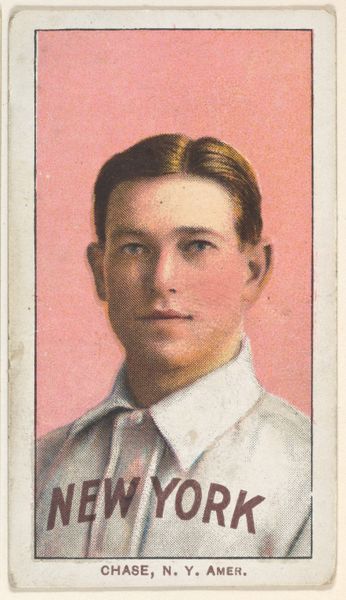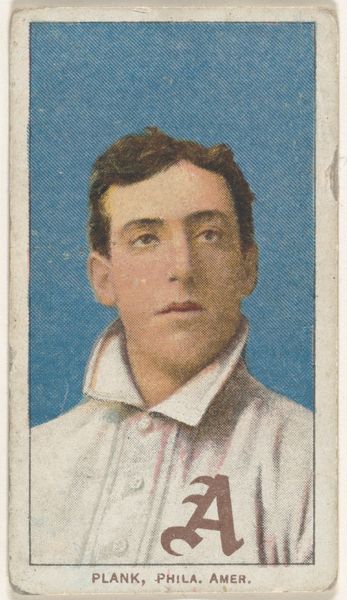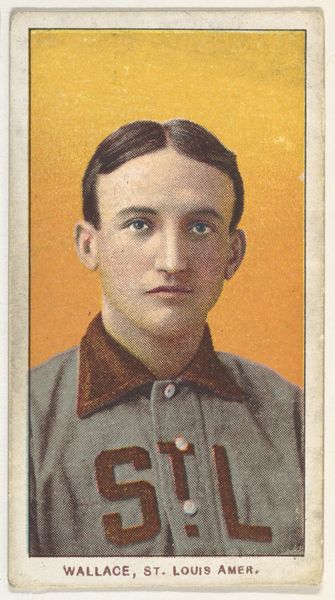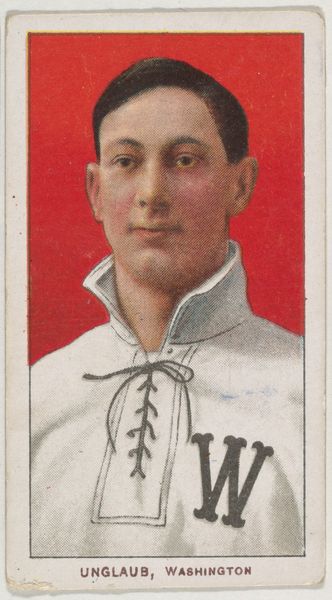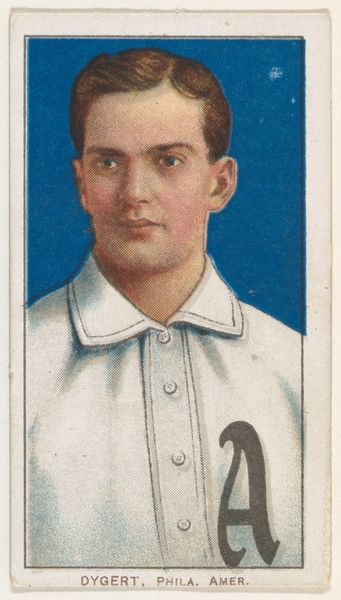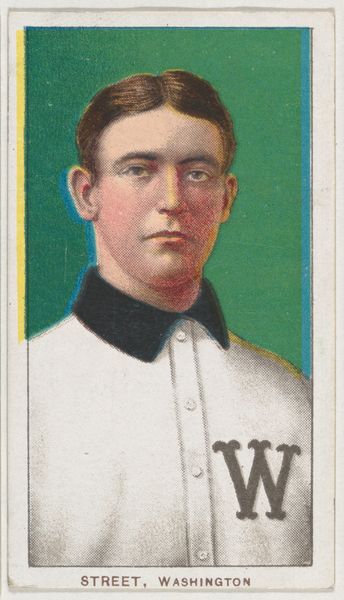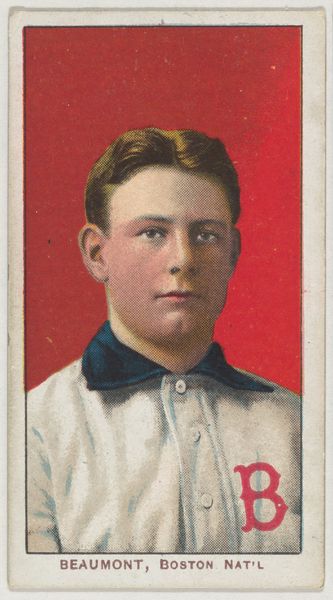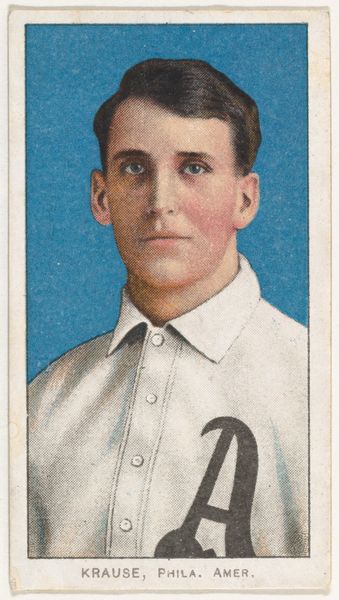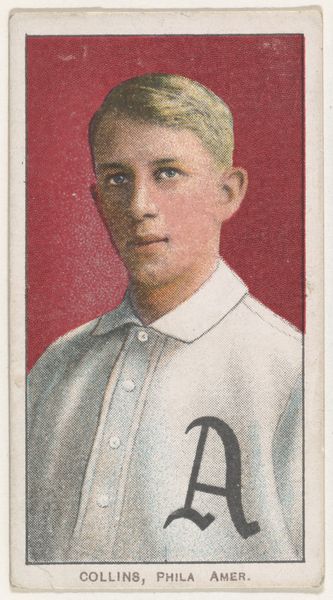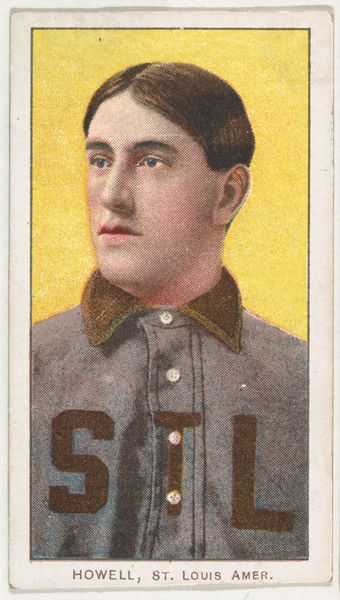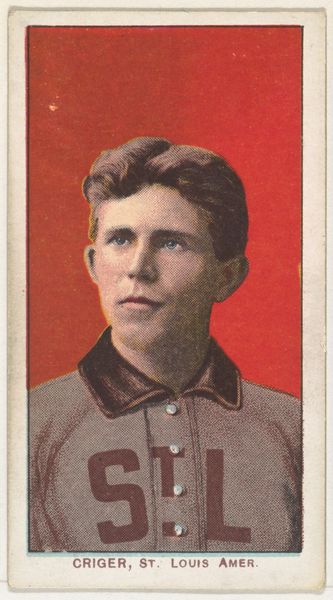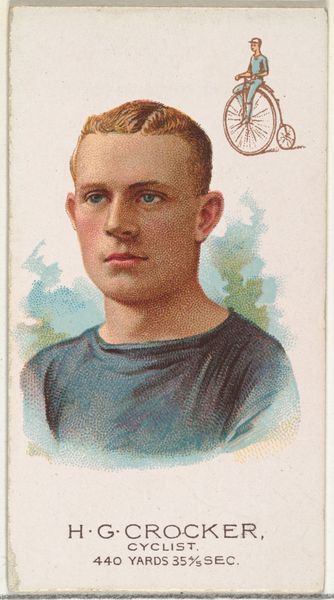
Bender, Philadelphia, American League, from the White Border series (T206) for the American Tobacco Company 1909 - 1911
0:00
0:00
drawing, print, photography, collotype
#
portrait
#
drawing
# print
#
photography
#
collotype
#
men
#
portrait art
Dimensions: Sheet: 2 5/8 x 1 7/16 in. (6.7 x 3.7 cm)
Copyright: Public Domain
Curator: Check out this evocative image of Chief Bender. It’s a baseball card, technically, produced sometime between 1909 and 1911 by the American Tobacco Company. What strikes you most? Editor: The flatness, almost like a Byzantine icon. He's fixed in this kind of eternal baseball stance. That gaze…a sort of melancholic stoicism? It’s intense for a baseball card! Curator: Right? And consider what those early baseball cards meant—not just collectibles, but a direct tie to heroes, to something bigger. There’s the power of symbols there, a way of rooting a team, its city. The American Tobacco Company knew that appeal all too well. They helped create those longings. Editor: Precisely. The company leverages a myth-making machine—tobacco becomes mixed in memory with cultural symbols. And "Chief" Bender is so charged: A Native American baseball star during an era of rampant cultural appropriation. It is also poignant… he is typecast. The image on this tiny card captures something about that struggle. Curator: Absolutely. This image feels like an act of claiming identity. While constrained, the drawing—I find it affecting. Like you’re invited to connect with Bender’s complexity beyond the field. What resonates across all the noise of history and propaganda is an image of genuine humanity. Editor: It’s strange to consider the ephemeral nature of these cards, their planned obsolescence, as standing for larger social truths. In hindsight, it’s that small scale and quiet determination that truly speaks volumes about the complexities that face every immigrant…and Native American at the time. He makes a point of being the thing that nobody thought that he could be… enduring! Curator: A haunting echo of resilience and perhaps a premonition on our shared cultural symbols and historical baggage that endure through time. Editor: Yes, small items…that carry cultural memories across great temporal distances, which allows them to transcend and transform the intended propaganda of their creators.
Comments
No comments
Be the first to comment and join the conversation on the ultimate creative platform.
